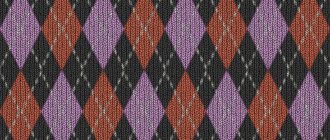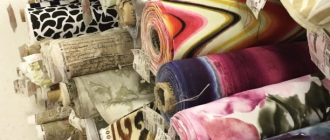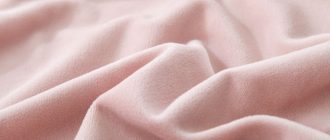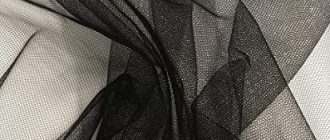What Is Chenille Fabric Used For?
If you’re considering redecorating your home, you may wonder what chenille fabric is made of. Read on for the pros and cons of this material. This fabric can be both beautiful and durable.
In this article, we’ll discuss the pros and cons of chenille fabric and its advantages and disadvantages. You’ll be better equipped to decide wisely when choosing a chenille fabric for your home.
What is chenille fabric?
Because of its softness and durability, Chenille fabric is a popular choice among homeowners. This type of fabric comes in a wide range of colors, making it an excellent choice for various applications, from home furniture to clothing. It is often associated with style, elegance, and durability. The production process of chenille fabric is intricate and tricky. For this reason, the right textile should be chosen for your project.
Chenille is a fabric made of several fibers, including rayon and polyester. In addition to cotton, it can be made from silk, rayon, and polyester fibers. A common method for manufacturing chenille is to wrap short lengths of yarn around a core, causing the edges to stand at right angles to the center of the fabric.
The softness of chenille makes it a popular choice for clothing, and it is often used in place of velvet in jackets and cardigans. In addition to its softness, chenille is also easy to sew. You can sew a zig-zag stitch or stretch needle for knitted chenille, depending on the fabric.
A chenille fabric has a unique fuzzy surface, often described as reminiscent of the furry critters found in nature. Chenille gets its name from the French word for caterpillar, which refers to the fuzzy surface of the fabric. Although chenille fabric has been around for hundreds of years, it has been modernized by new techniques and the introduction of nylon. So, what is chenille fabric?

What is chenille made of?
If you’re interested in the benefits of chenille fabric, keep reading! This soft, fuzzy fabric is made by weaving yarn or short materials onto fabric strands. Chenille is often called the poor man’s velvet, a great quilted fabric. Chenille is made from cotton, silk, rayon wool, or polyester. This unique material is incredibly soft and can be used in various applications, from quilting to home decorating.
This is because the fabric is composed of purposefully piled threads that mimic the exterior of the caterpillar. Although it originated in France, it has become one of the most popular fabric types today.
The benefits of chenille upholstery fabric include its softness, durability, and durability. However, this fabric should be kept away from high-traffic areas, as it will wear out quickly if you place it incorrectly. For example, using chenille upholstery in bedrooms, lounges, or bedrooms where pets aren’t likely to scratch or bite is best. Its durability, however, is unmatched by anything you’d find in a luxury home.
The benefits of using chenille fabric
One of the most attractive aspects of chenille fabric is its luster. Light reflects off of its uneven surface, creating an iridescent shimmer that catches the light. Chenille also boasts an excellent drape and incredible heat retention. In addition to its luster, chenille has some other benefits. It is extremely soft and comfortable. Whether you’re shopping for a home or preparing a festive dinner, this fabric is an elegant choice.
A chenille fabric’s plush pile makes it perfect for everyday use. It resists pilling and wrinkling, making it a popular choice for homes that don’t need to be overly luxurious. The durability of chenille also makes it ideal for furniture that needs to maintain its polish. Chenille is made of various yarns, including wool and silk, making it an ideal choice for homes that strive to be chic yet not too stuffy.
The cons of using chenille fabric
Chenille fabric is excellent for carpets and area rugs, but it is not a sustainable fabric if not made from organic cotton. This means the sun easily damages the fibers and loses their pile and color. Even worse, they will look uneven after a few years. If you’re considering purchasing a chenille for a room with windows, here are some things to remember.
The cons of using chenille fabric: Chenille is a difficult material to care for and doesn’t retain color for long. Although chenille is soft and luxurious, it’s also more difficult to clean than many fabrics. While it’s still worth investing in chenille for your home, consider its cons and choose a different fabric if possible.
History of chenille fabric
The invention of sewing machines made chenille fabric affordable and versatile for various products, including bedspreads. The machine’s heads formed two chenille yarns directly onto bobbins, making the process easier.
Giesse was among the first to produce these machines, with more than fifty heads and 100 spindles. This industrial process eventually produced high-quality chenille fabrics, which have become popular for clothing and other home décor products.
Rollers then heated the strips to produce frizz, creating the material we know today as chenille fabric. Later, the technique was perfected by James Templeton, who refined it and developed the manufacturing of tufted carpets. This product was far superior to hand-woven oriental carpets and was an immediate hit in the textile industry.
Chenille has been produced in Europe for centuries, but it gained popularity only in the twentieth century. In the 1930s, it became a popular material for housewares, and sturdy versions of chenille yarn were used on carpets and bedspreads.
The fabric became more commercially viable for use on garments during the 1970s. In recent years, standards have been developed for chenille production. There is even a Chenille International Manufacturers Association, which works to standardize the manufacturing process.
How to care for and clean chenille fabric?
If you own a chenille sofa, you may wonder how to clean and care for it. Chenille fabric is a popular choice because of its softness and durability. While this material is not ideal for everyday wear, it is excellent for home decor. When properly cared for, the chenille will remain looking brand new for many years to come. However, it does require special care.
To clean chenille upholstery, leave it completely dry before using it again. Wet chenille will transfer dye to other items and fabrics. If the stain is large enough, you may need a professional cleaner. It is also best to get the upholstery professionally cleaned if there are a lot of stains or dirt. Using a dry cleaning brush will also help remove stubborn spots that may be difficult to remove.
FAQ
Main chenille fabric colors
- grey
- green
- blue
- red
- black
- pink
- purple
- yellow
- white
Main chenille fabric brands
- Spoonflower
- Ambesonne
- Sophia-Art
- APC Fabrics
- ben textiles inc.
- Cotton + Steel
- Robert Kaufman
- eLuxurySupply
- Fabric Merchants
- SanVera17
- Michael Miller
- TELIO
- Lunarable







